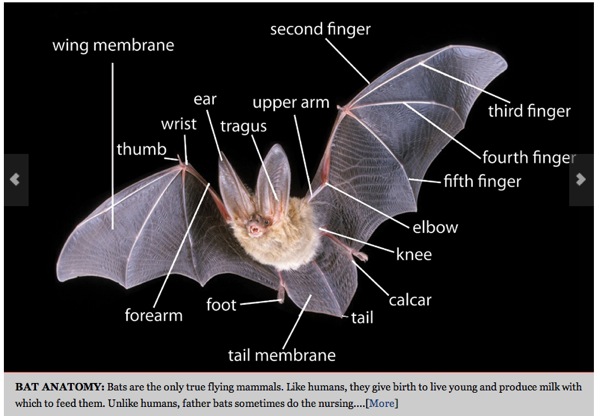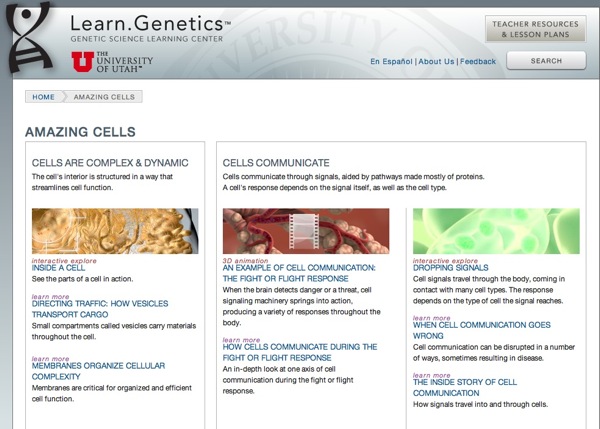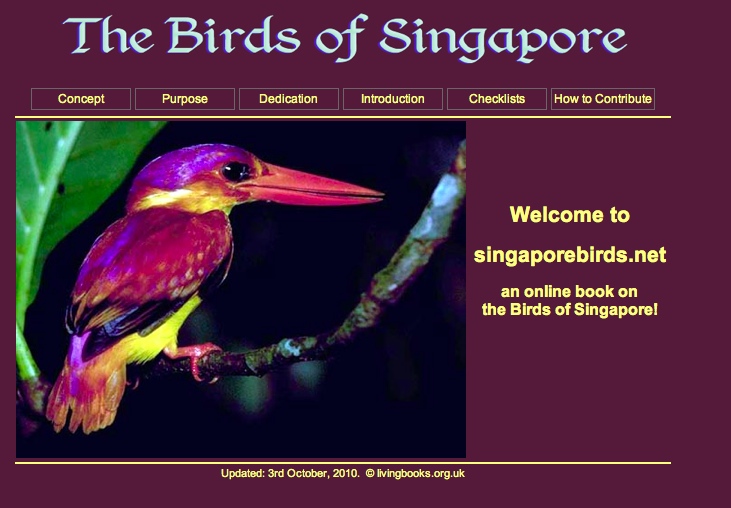Evolution Right Under Our Noses
By CARL ZIMMER
To study evolution, Jason Munshi-South has tracked elephants in central Africa and proboscis monkeys in the wilds of Borneo. But for his most recent expedition, he took the A train.
Dr. Munshi-South and two graduate students, Paolo Cocco and Stephen Harris, climbed out of the 168th Street station lugging backpacks and a plastic crate full of scales, Ziploc bags, clipboards, rulers and tarps. They walked east to the entrance of Highbridge Park, where they met Ellen Pehek, a senior ecologist in the New York City Parks and Recreation Department. The four researchers entered the park, made their way past a basketball game and turned off the paved path into a ravine.
They worked their way down the steep slope, past schist boulders, bent pieces of rebar, oaks and maples, hunks of concrete and freakish poison ivy plants with leaves the size of a man’s hands. The ravine flattened out at the edge of Harlem River Drive. The scientists walked north along a guardrail contorted by years of car crashes before plunging back into the forest to reach their field site.
“We get police called on us a lot,” said Dr. Munshi-South, an assistant professor at Baruch College. “Sometimes with guns drawn.”
Dr. Munshi-South has joined the ranks of a small but growing number of field biologists who study urban evolution — not the rise and fall of skyscrapers and neighborhoods, but the biological changes that cities bring to the wildlife that inhabits them. For these scientists, the New York metropolitan region is one great laboratory.
White-footed mice, stranded on isolated urban islands, are evolving to adapt to urban stress. Fish in the Hudson have evolved to cope with poisons in the water. Native ants find refuge in the median strips on Broadway. And more familiar urban organisms, like bedbugs, rats and bacteria, also mutate and change in response to the pressures of the metropolis. In short, the process of evolution is responding to New York and other cities the way it has responded to countless environmental changes over the past few billion years. Life adapts.
The mice are the object of Dr. Munshi-South’s attention. Since 2008, he and his colleagues have fanned out across the city to study how the rise of New York influenced the evolution of the deer mice.
On this day in Highbridge Park his students, Mr. Cocco and Mr. Harris, spread a blue tarp on the forest floor, while Dr. Munshi-South walked to an orange flag planted in the ground. He picked up an aluminum box sitting next to the flag and pushed in a door at one end. At the other end of the box crouched a white-footed mouse. It gazed back at Dr. Munshi-South with bulging black eyes.
The researchers inspected 50 traps laid the day before and found seven mice inside. They plopped each mouse out of its trap and into a Ziploc bag. They clipped a scale to each bag to weigh the mice. Dr. Munshi-South gently took hold of the animals so his students could measure them with a ruler along their backs.
Dr. Munshi-South and his colleagues have been analyzing the DNA of the mice. He’s been surprised to find that the populations of mice in each park are genetically distinct from the mice in others. “The amount of differences you see among populations of mice in the same borough is similar to what you’d see across the whole southeastern United States,” he said.
White-footed mice live today in forests from Canada to Mexico. They arrived in the New York City region after ice age glaciers retreated 12,000 years ago. In the past few centuries, as their forest home became a city, they survived in New York’s patches of woods. (House mice, which New Yorkers battle in their apartments, arrived with European settlers.) Research by Dr. Munshi-South and his colleagues suggests that New York’s white-footed mice, which occupy isolated patches, are adapting to life in the city.
When Dr. Munshi-South opened the final trap, the seventh mouse had run out of patience. It shot out of its box and raced off into the brush.
Mr. Cocco shrugged. “They are New Yorkers, after all,” he said.
Pollution Forces Change
Evolution is one of life’s constants. New species emerge; old ones become extinct. Environmental changes have often steered evolution in new directions. And modern cities like New York have brought particularly swift changes to the environment. European settlers cut down most of New York’s original forest; towns grew and then merged into a sprawling metropolitan region. The chemical environment changed as well, as factories dumped chemical pollution into the water and soil.
Pollution has driven some of the starkest examples of evolution around New York. Hudson River fish faced a dangerous threat from PCBs, which General Electric released from 1947 to 1977. PCBs cause deformities in fish larvae. “These are important changes,” said Isaac I. Wirgin of New York University Medical Center. “If you’re missing your jaw, you’re not going to be able to eat.”
Dr. Wirgin and his colleagues were intrigued to discover that the Hudson’s population of tomcod, a bottom-dwelling fish, turned out to be resistant to PCBs. “There was no effect on them at all,” Dr. Wirgin said, “and we wanted to know why.”
In March, he and his colleagues reported that almost all the tomcod in the Hudson share the same mutation in a gene called AHR2. PCBs must first bind to the protein encoded by AHR2 to cause damage. The Hudson River mutation makes it difficult for PCBs to grab onto the receptor, shielding the fish from the chemical’s harm.
The AHR2 mutation is entirely missing from tomcod that live in northern New England and Canada. A small percentage of tomcod in Long Island and Connecticut carry the mutation. Dr. Wirgin and his colleagues concluded that once PCBs entered the Hudson, the mutant gene spread quickly.
“When these chemicals first starting getting released, if you had the normal form of the gene, you probably weren’t going to make it,” Dr. Wirgin said.
Evolution has also run in the opposite direction as government agencies cleaned up some of the pollution around New York. In 1989, Jeffrey Levinton of Stony Brook University and his colleagues discovered that a population of mud-dwelling worms in the Hudson had evolved resistance to cadmium. They lived in a place called Foundry Cove near a battery factory near West Point. Dr. Levinton and his colleagues found that the worms produced huge amounts of a protein that binds cadmium and prevents it from doing harm.
In the early 1990s, the federal Environmental Protection Agency hauled away most of the cadmium-laced sediment from Foundry Cove. Over nine generations, the Foundry Cove worm populations became vulnerable again. This shift occurred, Dr. Levinton and his colleagues reported last year, as worms from less contaminated parts of the river moved in. They are interbreeding with the resident worms, and the resistant mutations are becoming rarer.
Bacteria Adapt, Too
Today, scientists can scan the entire genomes of New York’s animals and plants to look for evolutionary changes. Last month, Mr. Harris presented new data on white-footed mice at the annual meeting of the Society for the Study of Evolution. Mr. Harris and his colleagues have identified mutations in more than 1,000 genes that are present in all New York City mice, but missing from mice in Harriman State Park, 45 miles north of the city.
The scientists are investigating whether these mutations have helped the mice adapt to life in New York City. Clues that some of them do are found in the functions of the mutated genes. Many of the genes are involved in fighting bacteria, while others are for reproduction and still others for coping with stress from exposure to chemicals. It’s possible that these new mutations are spreading independently in each of the parks in the city.
“The idea is that the urban pressures are the same everywhere, and they’re all adapting,” said Mr. Harris.
Cities attract only a small fraction of evolutionary biologists, who often work in lusher places like the Amazon. But urban evolution is attracting more research these days, because cities are fast-growing, and the urban environment is quickly taking over large areas of the Earth’s surface.
Evolution is not just taking place in New York’s rivers and parks. It’s also taking place inside its hospitals. In 1997, Dr. John Quale, an infectious diseases physician at SUNY Downstate Medical Center, discovered a newly evolved strain of bacteria in the city that is resistant to most antibiotics.
The bacterium, known as Klebsiella pneumoniae, is often found in hospitals, where it can cause pneumonia and other life-threatening infections. Doctors typically treat Klebsiella with a class of antibiotics called carbapenems. Dr. Quale and his colleagues discovered carbapenem-resistant Klebsiella in four hospitals in Brooklyn.
The new genetic recipe proved to be a winning solution. Dr. Quale’s surveys charted the strain as it spread from hospital to hospital throughout New York. “It’s one strain that’s adapted very well to the hospital environment, and it clearly has a survival advantage over other bacteria,” Dr. Quale said.
Once the new strain had established itself in New York, it began to spread out of the city. It’s now reached 33 other states, and has become a serious problem in other countries, including France, Greece and Israel.
Dr. Quale and his colleagues found that this new strain of Klebsiella is especially dangerous. About half of patients who get infected die. Doctors can cure some infections, but only by using toxic drugs that can cause nerve and kidney damage.
Fortunately, in recent years, New York has seen some modest success in fighting the bacterium. From 2006 to 2009, Brooklyn saw a decrease in the prevalence of the bacterium. But Dr. Quale doesn’t expect total eradication. “I think it’s always going to be with us — it’s so entrenched in our hospitals,” he said.
A Biological Melting Pot
While Dr. Quale studies evolution that happens out of sight, some scientists do their work in plain view. On a recent afternoon, James Danoff-Burg and Rob Dunn were clambering around in a narrow Broadway median on the Upper West Side. Dr. Danoff-Burg, a biologist at Columbia University, was digging up plastic cups from the ivy. Dr. Dunn, a biologist from North Carolina State University, was five feet in the air, crouched on a bough of a Japanese maple.
“New one! New one!” Dr. Dunn shouted over the traffic. He and Dr. Danoff-Burg were surveying the median for species of ants. Dr. Dunn had spotted Crematogaster lineolata, an ant species that he and Dr. Danoff-Burg had never found before in this particular urban habitat.
From his backpack, Dr. Dunn pulled out an aspirator, a rubber tube connected to a glass jar. Holding one end of the tube over the ant, he sucked it in. Instead of going into his mouth, the insect tumbled into the jar. (One hazard of urban evolutionary biology, said Dr. Dunn, is having your aspirator mistaken for a piece of drug paraphernalia.)
Dr. Danoff-Burg, Dr. Dunn and their colleagues chose to study the medians of Broadway to see how human activity alters biodiversity. In this artificial city, there is no environment more artificial than these medians, which sit on fill that was poured on top of subway tunnels. The scientists have found a blend of ant species, some that have been here since before the city existed, and others that have arrived more recently, hitching rides on ships, planes and trucks. The most common ant Dr. Danoff-Burg and Dr. Dunn encounter is the pavement ant (Tetramorium caespitum), which came from somewhere in Europe.
Biologists find a mixture of native and non-native in all the life forms they study in New York, from the trees in Central Park to the birds of Jamaica Bay. The biodiversity of New York today is the result of extinctions, invasions and adaptations. Manhattan was once home to 21 native species of orchids; today they’re all gone. In the current issue of Global Ecology and Biogeography, a team of scientists surveyed plant biodiversity in New York and 10 other cities. They found that 401 native plant species have vanished from New York since 1624, while 1,159 remain. New York’s native flora is vulnerable to extinction today in part because it was well adapted to the closed forests that once stood where the city is now.
Newcomers and Natives
As native species became extinct, new ones came to the city. As a major point of entry to the United States, New York is where many of North America’s invasive species first arrived. Some introductions were intentional. Starlings were brought to Central Park in 1890, for instance, as part of a project to bring every bird mentioned in Shakespeare to the United States. But most introduced species slipped in quietly.
Many non-native species quickly died out, but some fit comfortably into the city’s wildlife, and others wreaked havoc — first in New York and then beyond. New York was the port of entry for Dutch elm disease, chestnut blight, Asian longhorned beetles and other threats to trees across the country.
As the invaders adapted to New York, they put extra pressure on native species, competing with them for space and food. Recent research by the Brooklyn Botanic Garden found that American bittersweet vines are dwindling away within a 50-mile radius of New York City, outcompeted by Oriental bittersweet. At the same time, the two species are interbreeding, producing hybrids. “It’s a double-whammy,” said James D. Lewis, a plant ecologist at Fordham University.
Yet many native species still hold on. Dr. Danoff-Burg and Dr. Dunn were surprised to find that 9 out of the 13 ant species living in Broadway’s medians are native. Once the medians were built, the native species rushed in along with the invaders and created an ecosystem.
Dr. Danoff-Burg and Dr. Dunn are trying to figure out what controls the balance of native and new species in New York. They don’t understand why some medians have more biodiversity than others, for example. On natural islands, biodiversity tends to increase with the size of the islands. Dr. Danoff-Burg and Dr. Dunn find no such correlation in the medians on Broadway. They also have to determine how native species of ants are coexisting in such close quarters with invasive species.
New York, in other words, is an evolutionary experiment — one that some scientists find fascinating to observe. “It’s some new thing emerging around us,” Dr. Dunn said.
This article has been revised to reflect the following correction:
Correction: July 28, 2011
An article on Tuesday about the evolution of organisms in urban areas referred incorrectly to the treatment for infection with Klebsiella pneumoniae, a newly evolved strain of bacteria discovered in New York City. Doctors typically prescribe drugs from a large class of antibiotics known as carbapenems; there is no single antibiotic called carbapenem.
This article has been revised to reflect the following correction:
Correction: August 4, 2011
An article on July 26 about urban evolution described the rise of nonnative Oriental bittersweet vines incorrectly. The vines are outcompeting American bittersweet in a 50-mile radius of New York City, research by the Brooklyn Botanic Garden has found; they are not replacing American bittersweet at the Brooklyn Botanic Garden.




